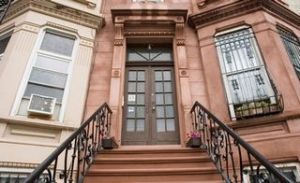 From 26'10 South Architects: "Can we imagine a move towards a dynamic flexibility which can deliver subsidised housing in which the unit becomes an asset leading to income generation? The housing types proposed for Diepsloot attempt to achieve higher occupational density in order to achieve minimum displacement of residents.
"The design also attempts to enable income generation through accommodating rental rooms, retail and small business enterprise. In addition ground floors are conceived as flexible spaces accommodating both trade and/or residential use. Circulation and services are positioned in such a way as to provide for these diverse occupation scenarios. This allows for economic development over time, especially along busy routes.
From 26'10 South Architects: "Can we imagine a move towards a dynamic flexibility which can deliver subsidised housing in which the unit becomes an asset leading to income generation? The housing types proposed for Diepsloot attempt to achieve higher occupational density in order to achieve minimum displacement of residents.
"The design also attempts to enable income generation through accommodating rental rooms, retail and small business enterprise. In addition ground floors are conceived as flexible spaces accommodating both trade and/or residential use. Circulation and services are positioned in such a way as to provide for these diverse occupation scenarios. This allows for economic development over time, especially along busy routes.
"Houses are located close to the street boundary to create a sense of urbanity, surveillance, ease of trading and to limit the amount of unusable space between units. The increased densities also achieve the necessary thresholds for the efficient provision of public transport and economic opportunities. Both the Vertical Yard and the 14x7m Row House offer two different approaches to achieve growth over time and a mix of uses and economies." Full page with images here.
From the write-up about 26'10 South's proposal included in the Smithsonian Cooper-Hewitt Design Museum's Design Other 90 Network: "The proposed housing types incorporate dynamic aspects of the informal city, such as flexibility and growth. The increase in density allows the units to be larger by saving money on land cost, infrastructure, and services."
Design Other 90 Network is an "open-network database" and "social-media platform that invites everyone to:
- Share vital design resources for developing and emerging economies.
- Connect with stakeholders in the fields of design, architecture, sustainability, humanitarian aid, and more.
- Engage a broad international audience in developing solutions for those living in poverty."
















 From Brooklyn Eagle writer Linda Collins: "
From Brooklyn Eagle writer Linda Collins: "
